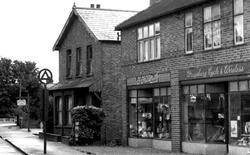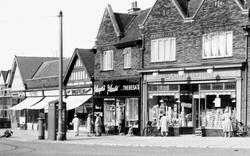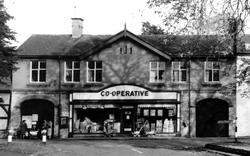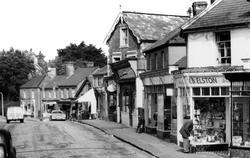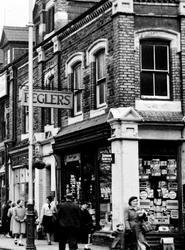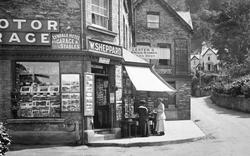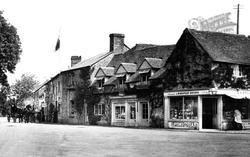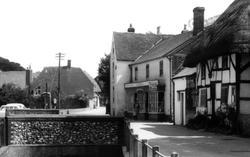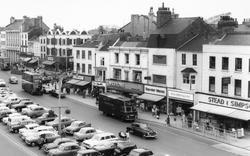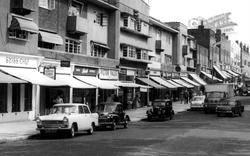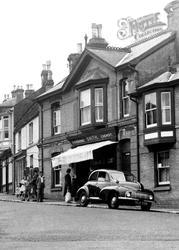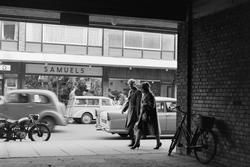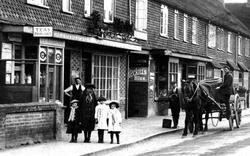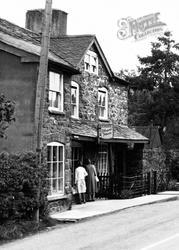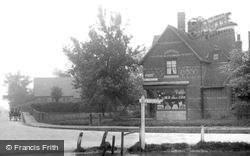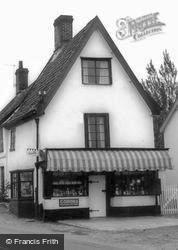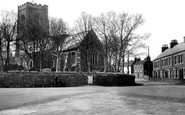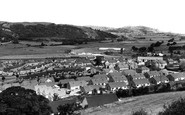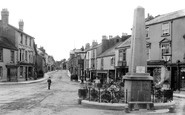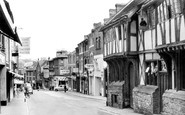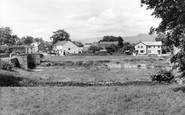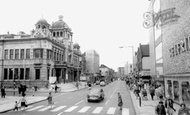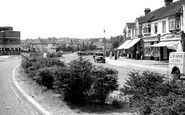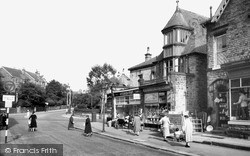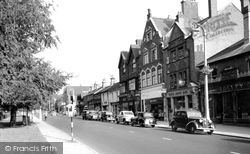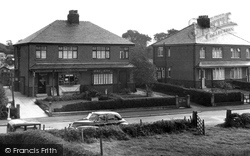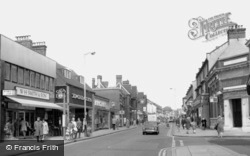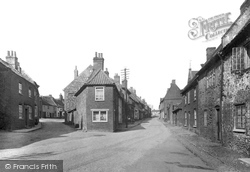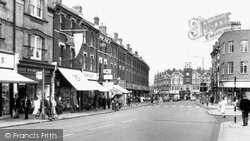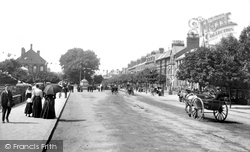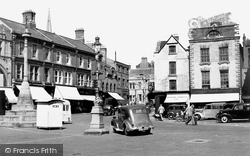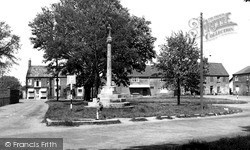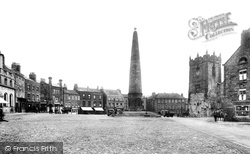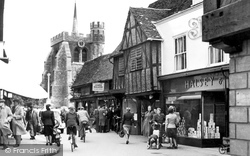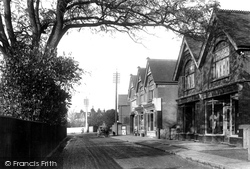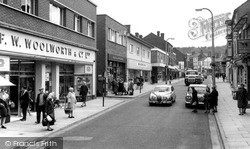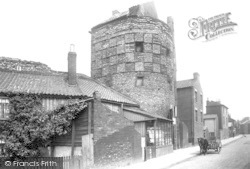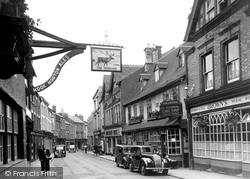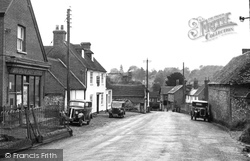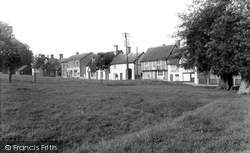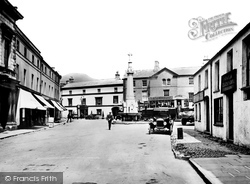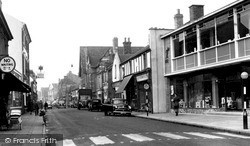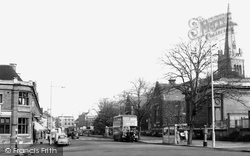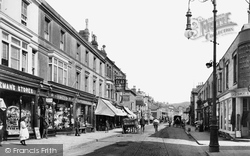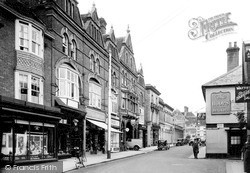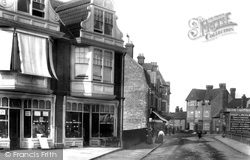Places
10 places found.
Those places high-lighted have photos. All locations may have maps, books and memories.
Photos
2,534 photos found. Showing results 2,021 to 2,040.
Maps
71 maps found.
Books
Sorry, no books were found that related to your search.
Memories
8,173 memories found. Showing results 1,011 to 1,020.
I Lived In The Square
I used to live in the square in one of the houses opposite the church. My father was in the navy at Spurn Head for a couple of years during the war. I went to the local school and I think my teacher was called Miss Skelton. ...Read more
A memory of Easington in 1940 by
1959 To 1964
In the bottom left corner of the photo is a row of four white bungalows. My father --Ron Bartlett built these and several others on the estate from about 1959 onwards. We lived in the top one. The house immediately to the right of ...Read more
A memory of Mochdre by
Heather And Gorse Clog Dancers Entertain At Chudleigh
Chudleigh hosts a wonderful Christmas late night shopping evening each year when the Christmas lights in Fore Street are switched on. The shops stay open until late evening and their windows ...Read more
A memory of Chudleigh in 2007 by
1939 1945
I have lovely memories of Wiveliscombe and my Father moved us there in September 1939. We lived in London and with the war upon us the move for me was very positive .I was just 3 at the time and really took to country life and we ...Read more
A memory of Wiveliscombe in 1940 by
Visits To Wareside 1964 Present
My dad was born at Hillside Cottages in Wareside in 1929 (I think). I remember visiting my Grandmother there up until she moved to Ware round about 1978/9. She lived in the house with the "Hillside Cottages" sign on ...Read more
A memory of Wareside in 1975 by
Pedestrian Shopping
I was born on Yeovil in 1945, and my memories are of growing up in a pleasant market town. The George was a wonderful timber framed building that I remember being demolished because, apparently, it hindered traffic flow. Shortly ...Read more
A memory of Yeovil by
Holidays
I came to Soulby for a holiday when I was 8 with my mother and sister. We stayed in a caravan the other side of this shallow river - by the local shop. The caravan was owned by a local farmer who was either a family friend or distant ...Read more
A memory of Soulby in 1961 by
Harrison Gibbisons Fire
Though this picture is dated 1955, I think its actually later than this. The reason for this is that about 1960 the Harrison Gibbison shop had a big fire that not only destroyed that shop but also Selfridges next door. This ...Read more
A memory of Ilford in 1960 by
Early Recollections
Amongst my earliest memories of Burnham-on-Sea are those of being in the forge of my grandfather's blacksmith's shop, he was Mr Welland, watching him shoeing horses. After the work was done he would hoist me up onto the ...Read more
A memory of Burnham-on-Sea in 1940 by
Coney Hall 1950/60s
This picture brings back many memories. I was born in 1953 and lived in Coney Hall until 1972, attending school at Wickham Common and then Hawes Down Secondary. The view from where this picture was taken is not dramatically ...Read more
A memory of West Wickham by
Captions
3,478 captions found. Showing results 2,425 to 2,448.
Around 1955 these three shops provided locals with all manner of things; meat, groceries, sweets, cigarettes, toys and hardware; there was even a lending library.
Tolley, the first shop, used to produce their own soft drinks on the premises.
W J Seddon was a grocer, a newsagent and other things besides, a very useful shop in a rural area, especially as every time a villager went into Poulton, the Shard Bridge toll had to be paid.
High Street North is a relatively undistinguished and typical London suburban shopping street: the exuberance of the Town Hall complex is forgotten.
A number of these houses have been converted into shops to cater for the visitors and pilgrims who flock to this town and visit the shrine of Our Lady of Walsingham.
The curving parade remains little altered in 1965, but already shop fronts are becoming gaudy and fascias oversized.
Here we look westward from the Clock Tower, a view taken before glass-roofed arcades were added to the buildings on the right when they became shops.
The obelisk seen in photograph No 33256 had been replaced by the Market Cross before the 1950s, and Broughton's shop was rebuilt in 1904; it is now the Trattoria Sorrento.
The roughly rectangular Market Place (or village green) with its medieval cross is surrounded by attractive houses with shops on the east side.
Most of these shops had a long history. Spencer's the stationer's beyond Finkle Street sold postcards, perhaps including Frith's!
The grocery firm of Halsey & Son were still trading from the same premises, but with a modern shop frontage.
At the end of the parade of shops on the right is the post office, and in the distance Broxmore, housing the doctor's surgery, stood on the site of the present Oakdene Parade.
It is sad that with the development of a large shopping centre in Telford town centre, Oakengates no longer attracts shoppers as it once did - even the branch of Woolworth we see here has
The Blackfriars, otherwise known as the South-East Tower, was used in the 19th century as a shop at street level with accommodation above—there was even a small cottage built on top.
The Original Cake Shop in Parsons Street (run by E W Brown at the time of this photograph) was demolished in 1968.
The first shop on the left is the post office – it has now moved. Next door is the Bakers Arms pub; in 1961 it was taken over by Mr and Mrs Calder-Smith.
The shop next door was Crickmore and Savage's, a grocer's and draper's, then Osborn's, and finally Ralling's when it closed in 1990.
The shop next door to it sold fishing tackle— fishing is one of the area's most popular pastimes. The public house on the right, the Corn Exchange, advertises stabling.
In the background, a notice on the shop advertises a 20hp Ford car for hire.
Further down, past a wool shop, is the large brick-built Kettering Conservative Club, built on a site donated by the Duke of Buccleuch in 1876.
A 'new style' double-decker bus pulls up at the Library bus stop. Piccadilly Buildings, opposite, were designed to harmonise with the Library.
The weatherboarded cottages are prominent among the stone fronted shops and restaurants, whose rich assortment of goods and services are lavishly advertised.
Next but one is Stead and Simpson's shoe shop and Dewhurst the butchers, then Cleale's garage with its Ford and AA signs.
Some of the High Street shops and houses reveal a Dutch influence, with mansard roofs and ornamental gables. The blinds are down, it is a hot day.
Places (10)
Photos (2534)
Memories (8173)
Books (0)
Maps (71)


